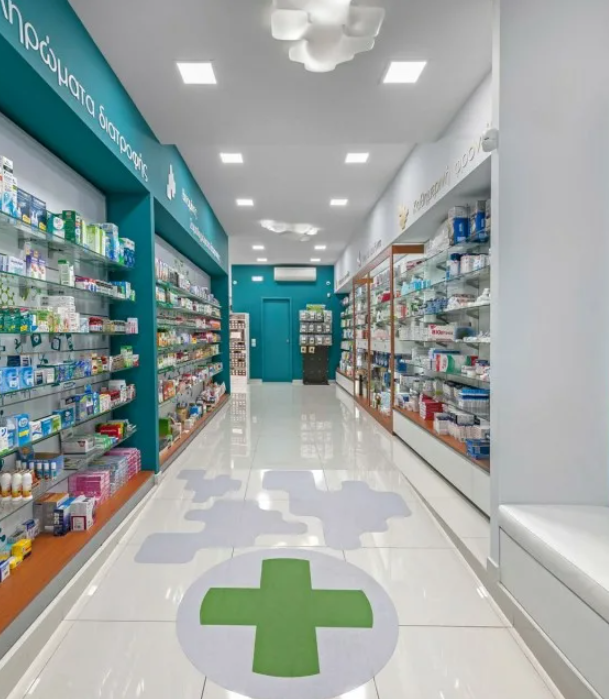Geomarketing for offline retail and services for urban residents
Choosing a place to launch a sales outlet (FMCG, DIY, pharmacies, cosmetics, etc.).
Step 1. Know our TA portrait and correlate it with the portrait located on the territory
Before opening a sales outlet, it’s important to understand who your target audience is. The more accurate its portrait is, the better.
Knowing your target audience will make it easier to correlate it with the local audience. You need to carefully analyze the age of the population, its purchasing power and consumer habits. It will be useful to calculate the share of working and living population in the area and determine who can become a potential customer.
Step 2. Determine the infrastructure density
Explore the area where you’re planning to locate your new outlet. Study the transport and trade infrastructure, the number of places of employment, the number of catering facilities, etc.
You should use the service radius of the sales outlet as a determining factor in the trade infrastructure. The service radius (pedestrian accessibility) is the area of operation of a sales outlet determined by the distance covered by the customers from their place of residence to this sales outlet.
On the map, we plotted a radius of 450 meters or a 5 minute walk.
This way you can plot the service radii of all of your competitors' outlets and understand where the radii intersect. The same can be done with transport accessibility, which implies that your potential customer moves, for example, by car.
The map below shows what distance a potential customer will cover from a given sales outlet in 5 minutes.
You can simulate the target audience by infrastructure objects. Look at the density of universities and the density of catering facilities in the city, pay attention to the density of banks and boutiques in the same city, and you will see that there are interesting differences related to the system of preferences of students and that of active business people with incomes above the average.
Step 3. Customer flow
The next step is to analyze the outlet for how many people will walk in its immediate vicinity.
Based on a local analysis — for example, cellular data (big data) — you can determine the number of people that passes through your trading area at different times of the day on weekdays and weekends.
The flows in the area of Chistye Prudy are distributed as follows.
Step 4. Competitive environment
The competitive environment in many cases is a threat.
For small stores, you should look for “your own” niches. For a large grocery retail company, there is always the option of opening a store in a place with the least number of competitors — let’s assume that large retail outlets are your competitors.
Step 5. Calculate the future profit: how much money will come from this location
In large companies, turnover formulas have been created empirically for years. In Western companies, they are often documented, strictly regulated, are a know-how and are not disclosed as trade secrets. The basis of the turnover formula is precisely geomarketing factors that affect the number of people that will visit your outlet and buy goods in a certain location.
Basically, this formula includes all we have described above.
2) Choosing a place for a private clinic
A place for opening a clinic: how geomarketing works
In order to understand where to find a place for a medical clinic, finding “customer flow” commercial premises is not enough — you need to study the environment: the population density, the age and sex structure, population incomes, transport and pedestrian access to the facility, the direct and indirect competitors.
A comprehensive geomarketing analysis and selection of a clinic location requires a methodology, data, and a geo-information or geomarketing system. They can be both professional and designed for users without specialized skills. If you have no resources, you can try to do without a geo-information system, but you will have to go “into the field” or look for information about the clinic location in open sources, where there is often little or insufficient information.
How to find a place for opening a medical clinic using multi-factor analysis
1.Define the goals and objectives of the geomarketing research.
2.Study the city by district or use a multi-factor analysis model.
3.Execute local analysis.
Determine the demand of the population
To study the city and understand what place is suitable for opening a clinic, you can assess the availability of medical services in each district of the city — calculate the number of hospitals or specific services per population.
Find the target audience on the city map
The data from mobile operators indicate mass crowds at different times of the day. This data is not a substitute for local measurement of pedestrian traffic but is suitable for macroanalysis.
Profiling mobile application users
Each geotag (mobile device position coordinates) is assigned a user's interest depending on the environment of the geotag. If the geotag is located near a place where a medical clinic is located, we consider this person to be interested in the medical clinic. The more often this user is interested in the object, the more we assume that the interest is steady. You can profile mobile application users in different categories: pharmacies, grocery stores, restaurants, etc.
Map of the target audience with interest in medical facilities.
Multi-factor target audience search model
Depending on the portrait of the target audience and the specifics of the business, we build hypotheses about the factors of spatial efficiency (high population density, high traffic flow, proximity to the metro, etc.) and TA attraction factors (places of work, places of leisure, etc.). Each factor is assigned a weight, and the values of these factors are added or multiplied.
As a result, the user sees the places most suitable for opening a clinic on the map.
The best areas for opening a clinic
An alternative to the multi-factor model is comparative analysis.
Step 1. Determine the service area and calculate the number of people living around the future location of the clinic.
The number of houses and apartments in the service area.
The number of residents, the ratio of children to parents.
Population density: the number of residents per square kilometer.
Step 2. Count the people passing by.
Step 3. Evaluate the competitors.
When choosing a location for medical clinics, it is important to understand how much of the potential audience the medical clinics are fighting for among themselves.
To do this, the user crosses the service areas on the map with a special GIS tool and considers the share of the population in the crossing zone.
First step: crossing the service areas of the two multidisciplinary medical centers.
Second step: calculating the population in the crossing zone of the two centers. There are 7,748 people living in the crossing zone.
Step 4. Assess the places of attraction of the audience.
In addition to the population and pedestrians, it is always useful to assess what places of audience attraction are in the environment. These places can provide nice traffic.
To determine which commercial premises is better, record the indicators in a table and compare them with each other.





















